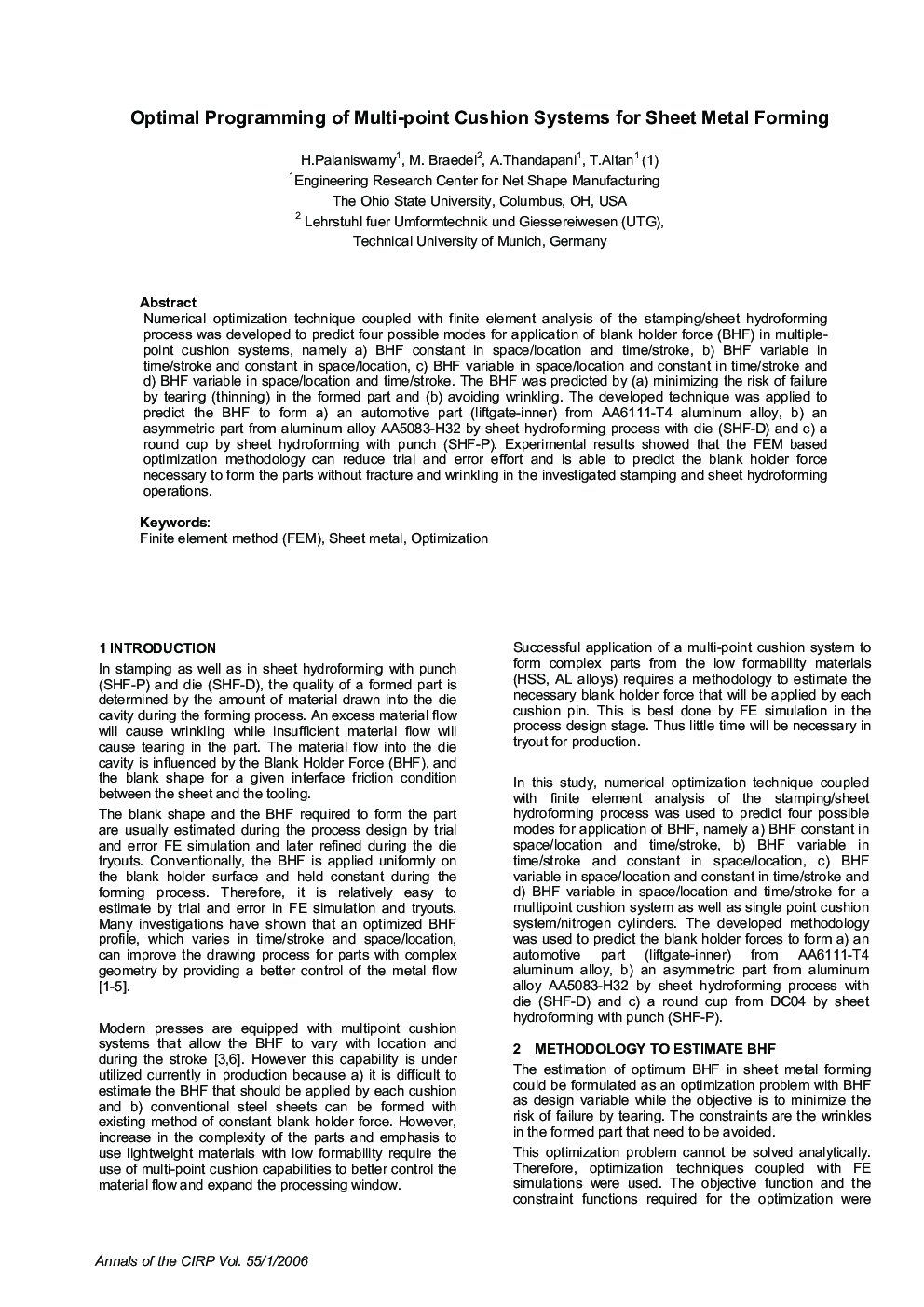| Article ID | Journal | Published Year | Pages | File Type |
|---|---|---|---|---|
| 1679617 | CIRP Annals - Manufacturing Technology | 2006 | 6 Pages |
Numerical optimization technique coupled with finite element analysis of the stamping/sheet hydroforming process was developed to predict four possible modes for application of blank holder force (BHF) in multiple-point cushion systems, namely a) BHF constant in space/location and time/stroke, b) BHF variable in time/stroke and constant in space/location, c) BHF variable in space/location and constant in time/stroke and d) BHF variable in space/location and time/stroke. The BHF was predicted by (a) minimizing the risk of failure by tearing (thinning) in the formed part and (b) avoiding wrinkling. The developed technique was applied to predict the BHF to form a) an automotive part (liftgate-inner) from AA6111-T4 aluminum alloy, b) an asymmetric part from aluminum alloy AA5083-H32 by sheet hydroforming process with die (SHF-D) and c) a round cup by sheet hydroforming with punch (SHF-P). Experimental results showed that the FEM based optimization methodology can reduce trial and error effort and is able to predict the blank holder force necessary to form the parts without fracture and wrinkling in the investigated stamping and sheet hydroforming operations.
